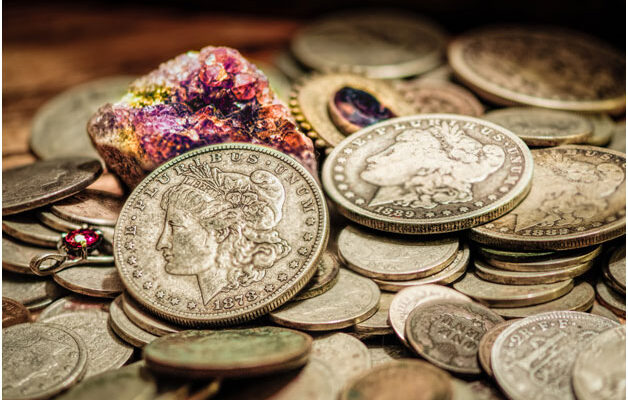Outline
Coinflation is an intriguing term in finance and investing. It serves to illustrate how coins’ intrinsic values vary with regard to metal content relative to face value; let us investigate its benefits and drawbacks for both investors and collectors alike.
What is Coinflation
Simply stated, coinflation occurs when the metal content of a coin is worth more than its face value. This generally happens when the market prices of metals used to manufacture currency—such as copper, silver, or gold—increase beyond where their face values match up with them.
Coinflation affects coins of various denominations, ranging from pennies and quarters up to more valuable denominations such as dollars. While its main application lies within numismatics, its relevance extends into financial services, where investors looking for protection often turn to precious metal coins as an inflation hedge and/or market stabilization measure.
The Rise of Coinflation
Coinflation has quickly captured both collectors and investors over recent years. Fueled by increased metal prices and economic instability, Coinflation is becoming more prominent every day. Investors increasingly look at higher metal-content coins, such as copper pennies from prior to 1982 or silver quarters, as possible investments that have potential values greater than their face value.
Numismatic Considerations
Coins have long played an integral part in history and numismatics, well beyond their metal composition. Collectors commonly assign values based on rarity, condition, and historical relevance for coins they collect. Collectors typically assign more weight than just metal content when assigning values-meaning collectors often assign values greater than its metal composition alone. Before simply considering coinflation’s impact on melt values alone-collectors may assign greater worth than its metal content itself.
Drawbacks of Coinflation
Although coinflation initially seems beneficial to investors, they should remain mindful of its downside risks.
1. Decrease in Purchasing Power
Coins that exceed their face value due to metal content often lose some purchasing power when used regularly for transactions, creating issues for small-scale users as the difference becomes even more visible between their face value and metal content. This issue becomes especially troublesome in smaller transactions when used for micro transactions requiring coins only as this makes the disparity between face value and metal content even more noticeable.
2. Interrupted Circulation
Inflation may impact an economy’s ability to circulate currency smoothly. As people realize coins hold more inherent worth than just their face value, they may hoard or melt them down for metal extraction, thus decreasing circulation levels further and making financial transactions harder for both individuals and enterprises. Eventually, this shortage may make financial transactions harder to process more smoothly as well as create logistical complications between consumers and enterprises alike.
3. Loss of Cultural and Historical Significance
Coins serve to symbolize both a country’s past and culture while serving as an essential means of commerce, but coinflation threatens this representation by damaging or altering these objects, diminishing both their historical and cultural values and possibly lessening coin collecting’s appeal as an interest or passion among numismatists/collectors alike.
Benefits of Coinflation
Although inflation does have its drawbacks, investors who seek ways to preserve wealth should still find advantages to its use:
1. Intrinsic Value Preservation
Coins made up of high metal content may provide investors with protection from depreciating money and inflation. While paper money fluctuates with buying power over time, coins with intrinsic value remain stable over time – giving investors real assets with which they can secure their capital and mitigate against economic instability.
2. Diversifying Portfolios
Coins with intrinsic value may help investors mitigate risk while increasing total returns by diversifying their investment portfolio with precious metal coins that don’t correlate to conventional financial assets like stocks and bonds – making these coins attractive assets to add as diversifiers among various asset classes.
3. Tangible Asset Ownership
Investors who purchase coins with inherent worth often own real precious metals such as silver and gold. In contrast to digital assets or financial instruments that rely on independent third-parties for verification, real coins offer investors more security and independence by giving them direct control of their funds.
Summary
Coinflation can be defined as the outcome of complex interactions among financial, cultural, and economic elements that influence how coins are seen and utilized within contemporary society. While coinflation has disadvantages such as diminished buying power and circulation disruptions,. There can also be advantages such as portfolio diversification, preservation of intrinsic value, and ownership of physical assets.



